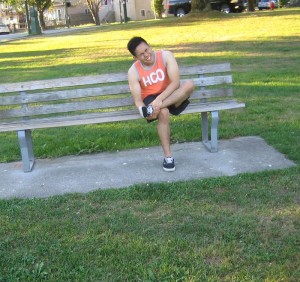The calf muscle can be found at the back of the lower leg and can become strained or pulled by engaging in excessive physical activities, overuse or a direct blow to the leg. It can also be caused by exposure to cold weather, stress, and deficiency in vitamins. Performing stretching before exercise sometimes helps in preventing a sore muscle calf. The sore calf muscle can be minor to severe and symptoms such as pain, weakness or inflammation of the affected area.
Causes
- Cramping, stiffness and severe pain can be experienced after performing exercises or overexerting the calves or legs which is caused by strain or tear in the muscle.
- Calf pain can be caused by sleep disorders that the affected person is not aware of especially if there are cramps during night time.
- Calf pain can be caused by chronic pain disorder such as fibromyalgia and arthritis.
- Calf pain can be caused by nerve disorders such as peripheral neuropathy, multiple sclerosis and multiple sclerosis.
- Poor circulation of the blood and varicose veins found in the calf can cause pain all day and night since it can be a sign of arterial insufficiency where it cannot supply sufficient blood for the calf.

Treatment
- Take plenty of rest especially the affected calf muscles and avoid using the muscle as much as possible. Avoid performing exercises until the calf muscle is totally healed.
- Apply compress or an ice pack over the affected area at least 20 minutes every 4 hours since helps lessen the swelling. Avoid directly applying the ice to the affected area. Make sure that it is wrapped in a small towel.
- Elevate the affected area above the level of the heart since it helps with proper blood circulation in the area.
- Wrap the calf muscles since it helps in providing support. You can also use crutches or cane to help with walking and allows the calf muscle to rest.
- Wear compression bandages since it helps minimize the swelling. Just remember to avoid wrapping the affected area too loose since it can cut off the circulation of blood in the area.
- Take the prescribed over-the-counter pain medications such as ibuprofen or acetaminophen.
- Use a heating pad several times every day if there is still pain after 4-5 days and before using the muscles or stretching.
- Start performing some mild exercises by sitting on the ground and stretch the legs in front. Stand up and touch the ground using the fingers and remain in this stretch for at least 10 seconds.
- Stretch the calf muscles before performing any strenuous physical activities such as running stretch regularly every day in order to help avoid pain and cramping.
- Seek the help of a physical therapist for some strength training exercises in order to help prevent straining of calf in the future.
